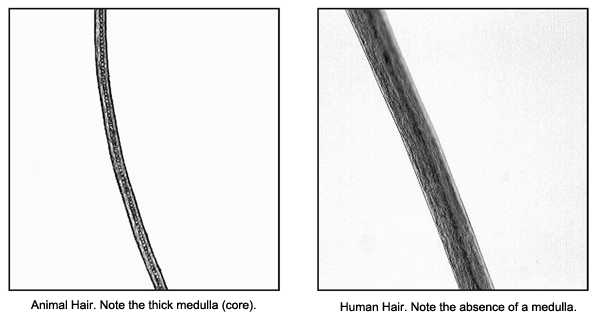CONSERVING NATURE THROUGH FORENSIC SCIENCE: AN INTERVIEW WITH DR. CLAIRE GWINNETT
Featured image: Staffordshire Univeristy
Wildlife forensics is an impactful field within the realm of environmental conservation and crime investigation, harnessing the principles of forensic science to safeguard wildlife and biodiversity. But what are the differences between human forensics and wildlife forensics? What are some of the motives behind wildlife crimes? How prevalent are they worldwide, and how effective is legislation? And finally, what is the role of wildlife forensics in nature conservation and specifically in the Nature FIRST project? Join us for an interview with Dr. Claire Gwinnett, a professor of forensic environmental science at Staffordshire University, as we delve into the answers to these questions, as well as her journey into this field and her aspirations for Nature FIRST’s impact on wildlife crime investigations.
From human forensics to wildlife forensics
Dr. Claire Gwinnett is a professor in forensic environmental science at Staffordshire University. She has extensive experience working as a consultant to law enforcement agencies who analyse samples related to wildlife crimes; and she also delivers training in the field for a variety of individuals, ranging from students to seasoned professionals actively engaged in fieldwork and research. In addition, she leads a research centre that mainly focuses on environmental crimes and wildlife crime investigations – while also committing to addressing numerous research questions that allow for the enhancement and improvement of wildlife crime investigation.
But how did she end up in the field of wildlife forensics? With a background in human forensics, Claire specialises in trace evidence – a field primarily associated with analysing human hair, fibres, glass, and other particles found at crime scenes. “That’s really what kicked it off: I did hair analysis for human crimes, and human hair research, but then there was a point when I started investigating animal hairs,” she explains. “And I’ve got to say, animal hairs are more interesting than human hairs.” The beauty of animal hairs lies in their diversity: each species has unique characteristics, making it possible to distinguish between them with a microscope and expert knowledge. This allowed Claire to address critical questions in wildlife crime investigations, such as identifying the victim species, tracing the origins of poached animal products, and more.
There are significant differences between wildlife forensics and human forensics, although some of the principles remain consistent across both disciplines. “The main principle, which is that every contact leaves a trace, is absolutely applicable to wildlife crimes and human crimes,” explains Claire. However, as a crucial difference, wildlife crime scenes entail dynamic outdoor environments, presenting unique challenges for investigators. Moreover, the types of evidence found at wildlife crime scenes differ from those in human cases. Traditional human forensic tools like DNA databases are often unavailable for animals, making the interpretation of evidence more challenging. Consequently, identifying the species from which a piece of evidence originates requires meticulous analysis and research. In addition, wildlife crimes frequently receive fewer resources and less attention, highlighting the need for specialised training and expertise.
Featured image: Carolina Knowledge Center
Wildlife crime on a global scale: motives and legislation challenges
Claire highlights that wildlife crime is a global problem not limited to specific regions or countries: it is widespread and often underestimated. “There’s not a country in the world that’s not involved in some way,” she explains. “Whether they have the animals and the poaching is happening there, or whether they are further down the illegal trade.” The demand for illegal wildlife items often stems from cultural traditions, beliefs, or fashion trends. Therefore, countries must prioritise both the safeguarding of threatened species and initiatives related to education and raising awareness.
Unsurprisingly, legislation surrounding wildlife crime is complex and varies from country to country. Some countries lack strict regulations or do not recognize wildlife abuse and poaching as criminal activities. Moreover, penalties for wildlife crimes can vary widely, from fines to jail sentences, and while legislation has improved in some regions, it still faces challenges in effectively deterring wildlife criminals.
Given the high prices for these types of products in the illegal market, monetary gain is a common motive for wildlife crimes. However, wildlife crimes can also be driven by sport, with some individuals engaging in activities like deer carting or badger baiting purely for the thrill. These crimes pose significant challenges to law enforcement.
Wildlife forensics in action
In a notable case that exemplifies Claire's impactful work, she was tasked with examining hairs retrieved from a trailer associated with suspected deer carting, an illegal activity involving the capture and transportation of wild deer for sport poaching. The challenge in such cases lies in gathering evidence, since the perpetrators are rarely caught in the act, and carcasses are often removed. Claire’s expertise in identifying animal hair played a pivotal role. Her microscopic analysis confirmed that the hairs retrieved from the trailer in question were indeed from deer, which provided crucial evidence for the prosecution. Importantly, both the prosecution and defence agreed with Claire’s findings, highlighting the strength and conclusiveness of her evidence, which proved instrumental in linking individuals to illicit activities.
Because of this, Claire often shares this example with her students. As part of her role at the Staffordshire University, she actively engages with students and conducts hands-on training on wildlife crime investigation. Mock crime scenes are set up, both indoors and in outdoor environments, to teach students how to approach, document, and investigate wildlife crime scenes. These practical exercises equip future professionals with the skills needed to tackle wildlife crime, as they pursue careers in forensic labs, law enforcement agencies, or involving the application of forensic knowledge in various areas, such as environmental protection and conservation.
Featured image: Wildlife Forensic Academy
Wildlife forensics and Nature FIRST
Claire’s involvement in the Nature FIRST project stems from her collaboration with the Wildlife Forensic Academy (WFA) organisation in South Africa. As a member of the WFA advisory board, she leads training and development initiatives, and the Nature FIRST project’s ambition to embed forensic science into its data-driven approach led to Claire being invited to the team. But how does forensic science align with the broader biodiversity-focused goals of the project? As noted by Claire, it plays a crucial role in monitoring and providing essential information about various environmental activities.
Within the Nature FIRST project, it is important to integrate forensic science principles into the fieldwork conducted by rangers and other personnel responsible for safeguarding specific field sites. As explained by Claire, this entails ensuring that all project outputs are designed to serve the needs of those on the ground. For instance, in cases involving sturgeon poaching, she applies forensic methodologies to document and manage the scenes effectively, ensuring that the collected evidence is forensically appropriate. The ultimate goal is to enhance training and awareness of forensic principles among field partners, establish robust protocols, and equip rangers with the tools to conduct thorough wildlife investigations.
“The collaboration has been highly beneficial, with cross-disciplinary knowledge sharing leading to innovative ideas and approaches”, says Clarie. She goes on to mention that she has enjoyed explaining the multifaceted nature of forensic science to non-experts and witnessing their understanding of its applicability in their respective fields.
Looking ahead, Claire’s primary goal within the project is to develop a comprehensive training program for field partners. This will begin with a needs assessment to gain deep insights into the specific requirements of each partner. The project aims to use the WFA facilities to create complex and sophisticated mock scenarios for training, offering an exciting opportunity to devise effective training methods. Ultimately, the overarching aspiration is to see previously overlooked crimes in field sites being properly investigated, and the perpetrators brought to justice through the engagement of law enforcement. This achievement would mark one of more significant and positive impacts of the Nature FIRST project.
Wildlife forensics is a vital tool in the fight against wildlife crime and the preservation of our planet's biodiversity - and collaborative efforts, like the Nature FIRST project, hold the promise of a brighter future for our natural world, where wildlife crime is exposed, investigated, and prevented through the power of forensic science.
If you would like to stay up to date on the Nature FIRST project and the use of digital twins for nature conservation, sign up for our newsletter.



